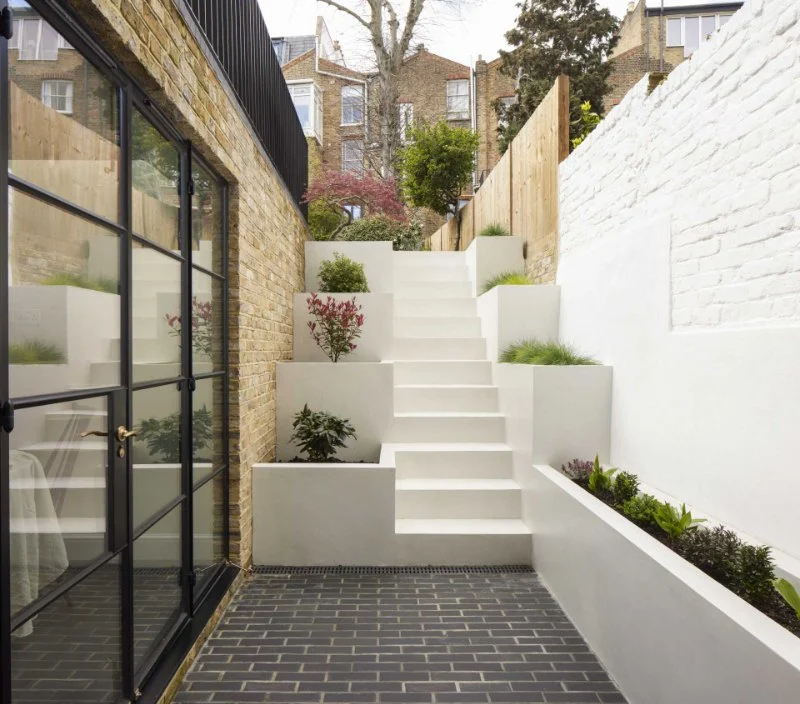
- Why Incorporating Steps and Elevation Is Important
- Planning Your Design with Steps and Elevation
- Designing Steps for Safety and Aesthetics
- Using Elevation to Create Focal Points
- Maintaining Your Step and Elevation Design
1. Why Incorporating Steps and Elevation Is Important
When designing an outdoor space, incorporating steps and elevation can have a profound impact on both functionality and aesthetics. Elevation allows you to create distinct areas within your landscape, guide visitors through your space, and add visual interest. Steps, whether leading up to a garden or down to a patio, serve both a practical and decorative purpose, enhancing your space's overall design.

Moore's Lawn Maintenance
380 E St Charles Rd Unit 472, Lombard, IL 60148, USA
1.1 Functional Benefits of Elevation
Elevation is an effective way to manage slopes or uneven terrain. By incorporating steps into your design, you can make hilly or uneven areas accessible, ensuring that visitors can move around your garden or backyard safely. Elevation can also be used to create tiered garden beds, helping to maximize space in smaller yards by allowing you to grow plants at different heights.
1.2 Aesthetic Impact of Steps and Elevation
Beyond their practical applications, steps and elevation can transform a flat, ordinary yard into a visually stunning outdoor area. By varying the levels of your landscape, you can create layers of texture, depth, and contrast. Elevation helps highlight focal points like fountains, sculptures, or specific plantings, making your design more dynamic and visually appealing.
2. Planning Your Design with Steps and Elevation
Before diving into the installation of steps and elevation in your garden, proper planning is essential. Here are some steps to guide your design process:
2.1 Assessing the Terrain
The first step in any landscape design that includes elevation is to assess the natural terrain. Consider the slope of your yard, the areas that might need leveling, and the spaces that could benefit from raised features like garden beds or patios. Understanding the topography will help you determine how much elevation you can incorporate and how many steps you’ll need.
2.2 Defining the Purpose of Elevation
Are you creating distinct garden levels, building a pathway, or adding a raised patio? The purpose of your elevation will inform the design of your steps. For example, a pathway might require gradual steps for easy walking, while a garden bed may need more distinct, higher elevation for better plant visibility and growth.
2.3 Integrating with Existing Features
When planning your design, think about how the steps and elevation will integrate with existing elements like outdoor furniture, trees, or water features. For example, if you have a pond or fountain, steps leading to it can create a peaceful, meditative area. Similarly, consider how the steps flow with the rest of your outdoor space, ensuring they are both functional and seamless in the overall design.
3. Designing Steps for Safety and Aesthetics
Steps are crucial for safety, especially if there is a significant elevation change. Properly designed steps ensure smooth transitions between different levels, while also adding to the visual appeal of your landscape.
3.1 Step Size and Spacing
The size and spacing of your steps are critical for both safety and comfort. Ideally, steps should be no higher than 8 inches (20 cm) to avoid making them too steep. The tread, or the flat part of the step, should be deep enough for a secure step, typically around 10 to 12 inches (25 to 30 cm). Consistent step sizes are important to avoid tripping hazards.
3.2 Materials for Steps
The material you choose for your steps will impact both their durability and appearance. Popular options include natural stone, concrete, wood, or brick. Stone and concrete offer a more formal, durable look, while wood adds a natural, rustic charm. Choose materials that complement the surrounding landscape and withstand the elements, especially if you live in an area with harsh winters.
3.3 Adding Railings or Borders
If your steps are more than a few risers high, adding railings can improve safety and add to the aesthetic. Railings made of wood, metal, or wrought iron can blend seamlessly with your design while offering essential support. For shorter steps, consider adding decorative borders made from stone or timber to create a visually appealing boundary.
4. Using Elevation to Create Focal Points
Elevation can also be used creatively to highlight key elements in your outdoor design. By raising certain features, you can draw attention to them and enhance their visual appeal.
4.1 Raised Garden Beds
One of the most common ways to use elevation in garden design is with raised garden beds. By elevating garden beds, you can improve drainage and provide easier access for planting and harvesting. Raised beds can also add variety and texture to your landscape, especially when combined with steps that lead to them, creating a structured, yet natural feel.
4.2 Tiered Patios or Decks
If you have a larger outdoor space, consider incorporating a tiered patio or deck. These multi-level spaces can be used for different purposes—one level for dining, another for lounging, or even an elevated space for a fire pit. The elevation adds visual interest and helps break up large, flat areas, making your outdoor space feel more dynamic and usable.
4.3 Highlighting Water Features
Water features like fountains, ponds, and waterfalls can be enhanced by elevation. By raising a water feature on a small mound or tier, you can make it a focal point that stands out in your design. The sound of running water also adds a tranquil element to your outdoor space, perfect for relaxation or meditation.
5. Maintaining Your Step and Elevation Design
Once your steps and elevation features are installed, regular maintenance is key to keeping them safe and visually appealing. Here are some tips for ongoing care:
5.1 Cleaning Steps and Surfaces
Regularly clean the surfaces of your steps, especially if they are made from stone or wood. Dirt, leaves, and moss can make surfaces slippery, so use a broom or pressure washer to keep them clear. For wooden steps, periodic staining or sealing will help maintain their appearance and protect them from the elements.
5.2 Inspect for Damage
Periodically inspect your steps and elevated features for any signs of wear or damage. Look for cracks, loose stones, or shifting wood. Promptly address any issues to prevent further damage and maintain the safety of your outdoor space.
5.3 Trim Overgrown Plants
If you have plants surrounding your steps or elevated areas, trim them regularly to prevent overgrowth from obstructing your steps or pathways. Keeping plants neatly trimmed will not only improve the aesthetic appeal but also ensure the safety of anyone using the space.
If you're ready to incorporate steps and elevation into your landscape design, visit Beautiful Landscapes for expert tips, products, and services that can help you create a stunning outdoor space.

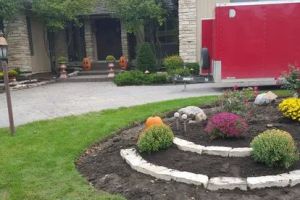
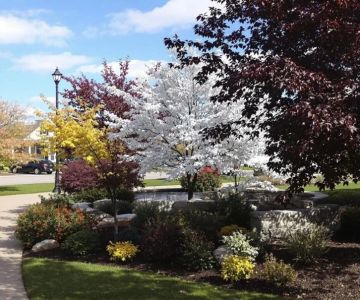
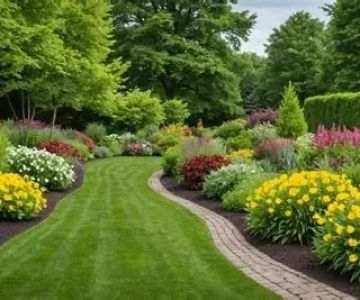
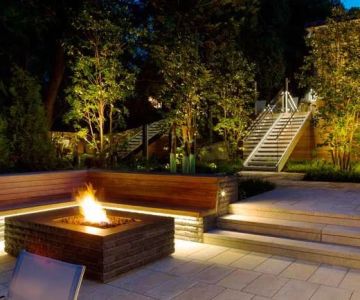

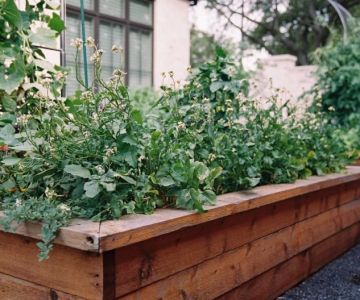
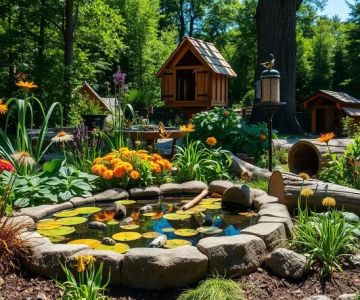
 Infinity Lawn & Landscaping4.0 (52 reviews)
Infinity Lawn & Landscaping4.0 (52 reviews) QualityWorks Trademark LLC4.0 (30 reviews)
QualityWorks Trademark LLC4.0 (30 reviews)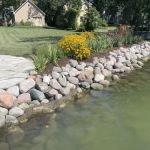 Eubanks Environmental5.0 (10 reviews)
Eubanks Environmental5.0 (10 reviews) BrightView Landscape3.0 (16 reviews)
BrightView Landscape3.0 (16 reviews) Statements In Stone Pool and Patio4.0 (47 reviews)
Statements In Stone Pool and Patio4.0 (47 reviews) Schmitt's Landscape Tree service North Aurora4.0 (4 reviews)
Schmitt's Landscape Tree service North Aurora4.0 (4 reviews) How to Landscape for Seasonal Wildlife Attraction in Your Garden
How to Landscape for Seasonal Wildlife Attraction in Your Garden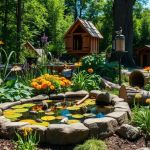 How to Build a Wildlife Habitat Garden That Supports Biodiversity
How to Build a Wildlife Habitat Garden That Supports Biodiversity How to Use Garden Art to Add Personality to Your Outdoor Space
How to Use Garden Art to Add Personality to Your Outdoor Space How to Plan Outdoor Fire & Water Features Harmoniously for Your Garden
How to Plan Outdoor Fire & Water Features Harmoniously for Your Garden How to Revive a Neglected Lawn Step by Step
How to Revive a Neglected Lawn Step by Step How to Choose Native Shrubs That Thrive Without Fertilizer
How to Choose Native Shrubs That Thrive Without Fertilizer